Let’s Be Honest, Folks…
With AI everywhere, we’ve all scrolled past the same question on LinkedIn or heard it in podcasts:
“Is AI going to replace Customer Success jobs?”
And, of course, the usual buzzwords follow:
“AI won’t replace you, but the person using AI will.”
Sounds catchy, right? But let’s pause and look deeper.
But here’s what we often forget, Customer Success isn’t only about handling customers.
It’s also about how we collaborate internally. When we talk with a Product Manager, can we speak in their language - talk about sprints, backlogs, or feature prioritization?
When we talk with QA, can we think like a tester - validate, question, and anticipate edge cases?
When we align with Marketing, can we understand segmentation, campaigns, or customer journey data?
That’s where the magic lies. It’s not about changing our role, but expanding our fluency. The better we understand how other teams think, the stronger our partnerships and the smoother our customer experiences.
AI isn’t replacing Customer Success, it’s reshaping what success itself means. It quietly automates repetitive tasks - call summaries, health scoring, survey consolidation, churn alerts, and QBR decks, etc. and gives us back something priceless: time to think.
Time to focus on what we’ve always wanted to do more of strategy, empathy, creative problem-solving.
Yet, in a team of ten, not everyone will become a “strategist” overnight. Strategy isn’t a checkbox. It’s an art, the ability to see patterns others miss, connect dots across functions, and influence without authority.
And that’s when it hit me, maybe the challenge isn’t AI. Maybe, over time, we’ve unintentionally treated Customer Success as a bubble.
We read CS blogs, attend CS webinars, and network with CS peers but rarely peek over the fence to understand how other teams think.
And that’s surprising, because CS has always been a cross-functional domain the connective tissue between Product, Marketing, Sales, and Support. With AI blurring functional boundaries, that mindset isn’t just valuable — it’s essential.
Think Like a Tester, Learn Like a Marketer
Imagine this: a new onboarding feature rolls out, and as a CSM, you’re the first to see real customer feedback.
What if you approached it like a tester — not just confirming it works, but exploring where it might fail, where users might get confused, or which edge cases could trip them up?
Now, imagine the same scenario from a Marketing lens:
What if you analyzed the messaging around the feature like a storyteller evaluating whether subject lines, visuals, or email copy truly resonate with customers?
Or consider churn data shared by RevOps: what if you became an analyst asking why patterns appear, what trends predict adoption, and how those insights could inform both Product and CS strategy?
These perspectives aren’t just “nice to have.” They’re how you become a CSM who drives end-to-end customer value.
AI amplifies this opportunity. Tools like ChatGPT, Claude, or Notion AI can help you simulate scenarios, summarize lessons, and test ideas before they happen. Suddenly, the boundaries between functions aren’t walls, they’re whiteboards.
Free AI Tools & Learning Resources to Explore Cross-Functional Skills
Here’s the exciting part: you don’t need expensive certifications to learn beyond CS. AI and free platforms make cross-functional learning highly accessible.
1. ChatGPT (Free)
Your personal cross-functional mentor. Try prompts like:
- “Explain how a Product Manager prioritizes features for a SaaS platform.”
- “Act like a Marketing Manager and teach me how to write a compelling adoption email.”
- “How would a QA tester validate a new dashboard feature?
2. Google Digital Garage
Free beginner-friendly courses on digital marketing, analytics, and user behavior. Perfect to understand how Marketing and UX teams operate.
Recommended: Fundamentals of Digital Marketing, Understanding Customer Behavior with Analytics
learndigital.withgoogle.com
3. HubSpot Academy
Short, practical lessons that teach you marketing, sales, and customer journey mapping.
Recommended: Inbound Marketing Certification, Service Hub for CS Professionals
academy.hubspot.com
4. Maven Analytics / Coursera (Free Trials)
Hands-on practice for data storytelling, visualization, and analytics.
Recommended: Data Storytelling for Business (Maven), Data Analysis and Visualization with Excel (Coursera – free audit)
5. Figma / Miro (Free Versions)
Peek into Product or UX workflows. Explore prototypes, customer journey maps, and collaborative boards.
Pro tip: Use AI to help explain what’s happening on a Miro board or translate a Figma prototype into plain-language user insights.
6. YouTube + AI
Channels like MeasureSchool, Fireship, or Alex Hormozi are great for seeing real-world workflows. Use AI to summarize lessons or generate questions to deepen learning.
Reflection: The Edge of Cross-Functional Curiosity
The future of Customer Success isn’t about staying in one lane. It’s about learning sideways, understanding the work of Product, Marketing, QA, and Ops, and connecting those insights to the customer experience.
AI gives us the bandwidth to explore, experiment, and test ideas across functions. It’s not here to replace us. It’s here to help us learn faster, think broader, and create more impact.
And here’s the exciting part: CS professionals are already naturally awesome at cross-functional collaboration.
We’re the bridge between customers and teams. When we also start speaking each team’s language, we make that bridge stronger, smoother communication, faster problem-solving, and richer innovation.
So this isn’t about adding more tasks. It’s about learning to see your customer’s world through every team’s lens.
Because when you understand what drives your internal teams, you create outcomes that drive your customers.
Actionable Takeaway
Start small:
- Join one Product sync a month.
- Ask Marketing how they segment customers.
- Learn a bit of data analysis or prompt-writing every week.
Because AI won’t replace Customer Success but it will replace those who stop learning.
The most future-ready CSMs won’t just be AI-trained. They’ll be cross-functionally fluent, endlessly curious, and unapologetically human.
Thanks for reading. I’d love to hear from you what’s one non-CS skill you’ve learned recently that changed how you approach your customers?


